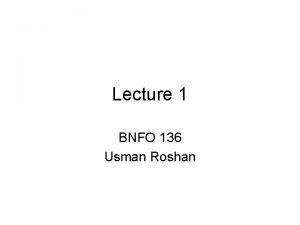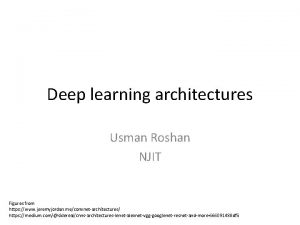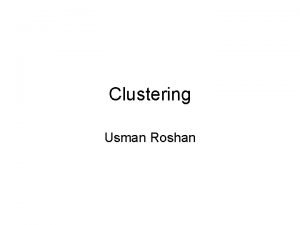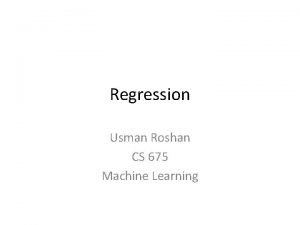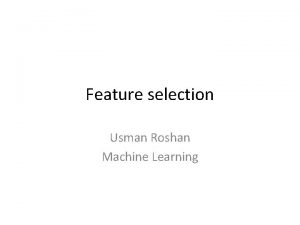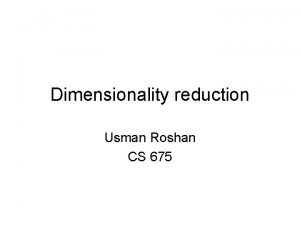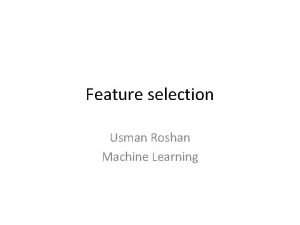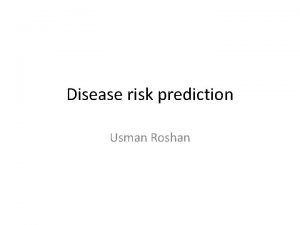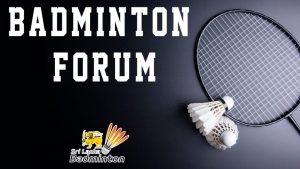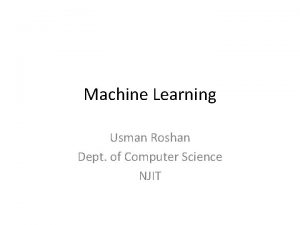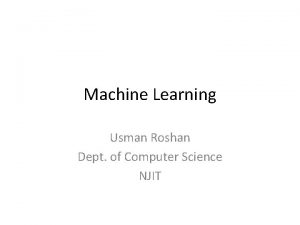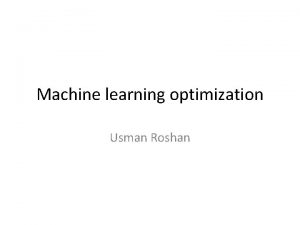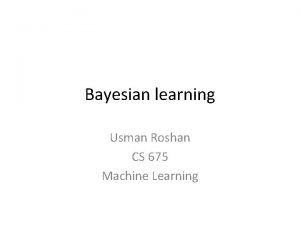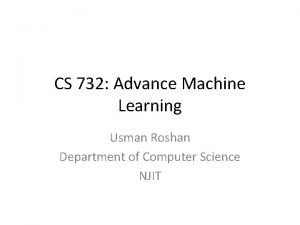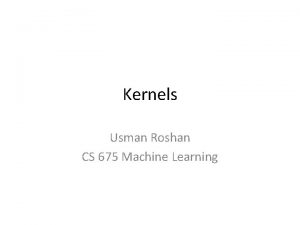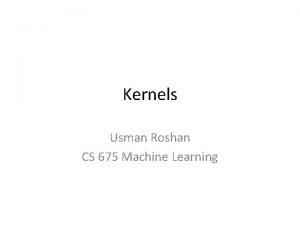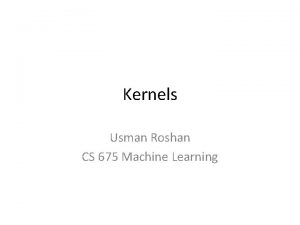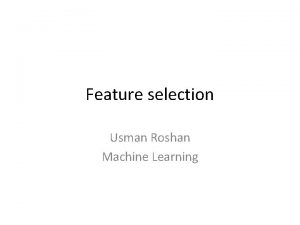Machine Learning Usman Roshan Dept of Computer Science














- Slides: 14

Machine Learning Usman Roshan Dept. of Computer Science NJIT

What is Machine Learning? • “Machine learning is programming computers to optimize a performance criterion using example data or past experience. ” Intro to Machine Learning, Alpaydin, 2010 • Examples: – Facial recognition – Digit recognition – Molecular classification

A little history • 1946: First computer called ENIAC to perform numerical computations • 1950: Alan Turing proposes the Turing test. Can machines think? • 1952: First game playing program for checkers by Arthur Samuel at IBM. Knowledge based systems such as ELIZA and MYCIN. • 1957: Perceptron developed by Frank Roseblatt. Can be combined to form a neural network. • Early 1990’s: Statistical learning theory. Emphasize learning from data instead of rule-based inference. • Current status: Used widely in industry, combination of various approaches but data-driven is prevalent.

Example up-close • Problem: Recognize images representing digits 0 through 9 • Input: High dimensional vectors representing images • Output: 0 through 9 indicating the digit the image represents • Learning: Build a model from “training data” • Predict “test data” with model

Data model • We assume that the data is represented by a set of vectors each of fixed dimensionality. • Vector: a set of ordered numbers • We may refer to each vector as a datapoint and each dimension as a feature • Example: – A bank wishes to classify humans as risky or safe for loan – Each human is a datapoint and represented by a vector – Features may be age, income, mortage/rent, education, family, current loans, and so on

Machine learning resources • Data – NIPS 2003 feature selection contest – mldata. org – UCI machine learning repository • Contests – Kaggle • Software – Python sci-kit –R – Your own code

Machine Learning techniques we will learn in the course Bayesian classification: Univariate and multivariate Linear regression Maximum likelihood estimation Naïve-Bayes Feature selection Dimensionality reduction: PCA Fisher discriminant Maximum margin criterion Clustering Nearest neighbor Perceptron and neural networks Linear discrimination: Logistic regression Support vector machines Kernel methods Regularized risk minimization Hidden Markov models Decision trees and random forests (if time permits) Advanced topics (if time permits): Boosting Deep learning

Textbook • Not required but highly recommended for beginners • Introduction to Machine Learning by Ethem Alpaydin (2 nd edition, 2010, MIT Press). Written by computer scientist and material is accessible with basic probability and linear algebra background • Applied predictive modeling by Kuhn and Johnson (2013, Springer). More recent book focuses on practical modeling.

Some practical techniques • Combination of various methods • Parameter tuning – Error trade-off vs model complexity • Data pre-processing – Normalization – Standardization • Feature selection – Discarding noisy features

Background • Basic linear algebra and probability – Vectors – Dot products – Eigenvector and eigenvalue • See Appendix of textbook for probability background – Mean – Variance – Gaussian/Normal distribution

Assignments • Implementation of basic classification algorithms with Perl and Python – Nearest Means – Naïve Bayes – K nearest neighbor – Cross validation scripts • Experiment with various algorithms on assigned datasets

Project • Some ideas: – Experiment with Kaggle and NIPS 2003 feature selection datasets – Experimental performance study of various machine learning techniques on a given dataset. For example comparison of feature selection methods with a fixed classifier.

Exams • One exam in the mid semester • Final exam • What to expect on the exams: – Basic conceptual understanding of machine learning techniques – Be able to apply techniques to simple datasets – Basic runtime and memory requirements – Simple modifications

Grade breakdown • Assignments and project worth 50% • Exams worth 50%
